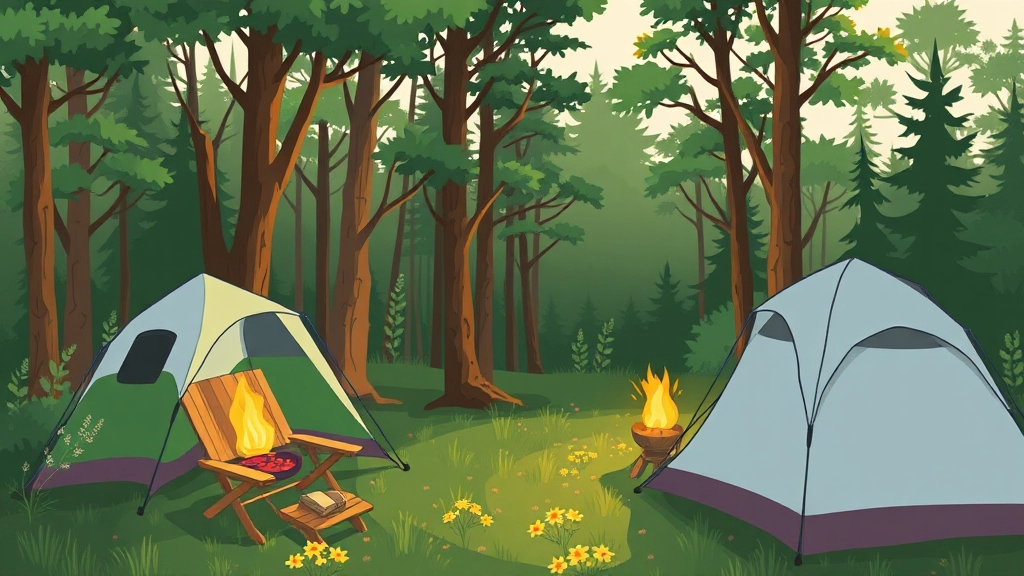Camping in the Summer
Camping in the summer can be an exhilarating experience, but staying cool and safe is crucial. Choosing the best campsite is the first step. Opt for shaded areas near water sources to help regulate temperature. Essential gear like portable fans, mesh tents, and breathable sleeping bags can make a world of difference. Remember, hydration is key—always have plenty of water and electrolyte drinks on hand.
Keeping Your Tent Cool
Keeping your tent cool during the day is easier with a few tricks. Use reflective tarps or space blankets to deflect the sun’s rays. At night, cooling strategies like portable fans, hammocks, and even cold showers can ensure a restful sleep. Dress in light, moisture-wicking clothing to stay comfortable.
Outdoor Activities
Lastly, manage outdoor activities wisely by avoiding peak heat hours and always applying sun protection. Enjoy your summer camping adventure with these practical tips!
When it comes to summer camping, picking the right campsite can make or break your experience. How do you find a spot that’s not only comfortable but also keeps you cool during those sweltering days? Let’s dive into the essentials of choosing the best campsite for hot weather.
First off, location is key. You want a place that offers natural shade and a cool breeze. Think about these factors:
– **Elevation**: Higher altitudes tend to be cooler. If you’re near mountains or hills, aim for a higher spot.
– **Shade**: Look for areas with plenty of trees. Natural shade can significantly lower the temperature.
– **Water Sources**: Camping near a lake, river, or stream can provide a cooling effect and easy access to water.
You might be wondering, “How do I find a shaded spot without compromising on other amenities?” Here’s what I’ve learned from years of summer camping:
– **Scout Ahead**: If possible, visit the campsite beforehand. Look for areas with dense tree cover.
– **Use Maps and Apps**: Tools like Google Maps and camping apps can show you the terrain and vegetation.
– **Ask for Recommendations**: Online forums and local camping groups can provide insights into the best spots for summer camping.
The way you set up your tent can also impact how cool it stays. Here’s a quick checklist:
– **Face East**: Position your tent entrance to the east to catch the morning sun and avoid the harsh afternoon heat.
– **Utilise Wind**: Set up your tent to catch prevailing winds. This can naturally ventilate your tent, making it more comfortable.
Last summer, I camped in the Peak District, a popular spot in the UK. I chose a site near a small stream, with plenty of trees around. The elevation was moderate, and the breeze from the water kept the area surprisingly cool. It was a game-changer. So, when you’re planning your next summer camping trip, think about these elements. They can transform a hot, uncomfortable experience into a refreshing outdoor adventure.
For more tips on how to make the most of your summer camping experience, check out our [essential guide to summer camp waivers](https://summercamp.blog/essential-guide-to-summer-camp-waivers/) and our [ultimate packing guide for summer camp essentials](https://summercamp.blog/summer-camp-essentials-ultimate-packing-guide/).
Essential Gear for Hot Weather Camping
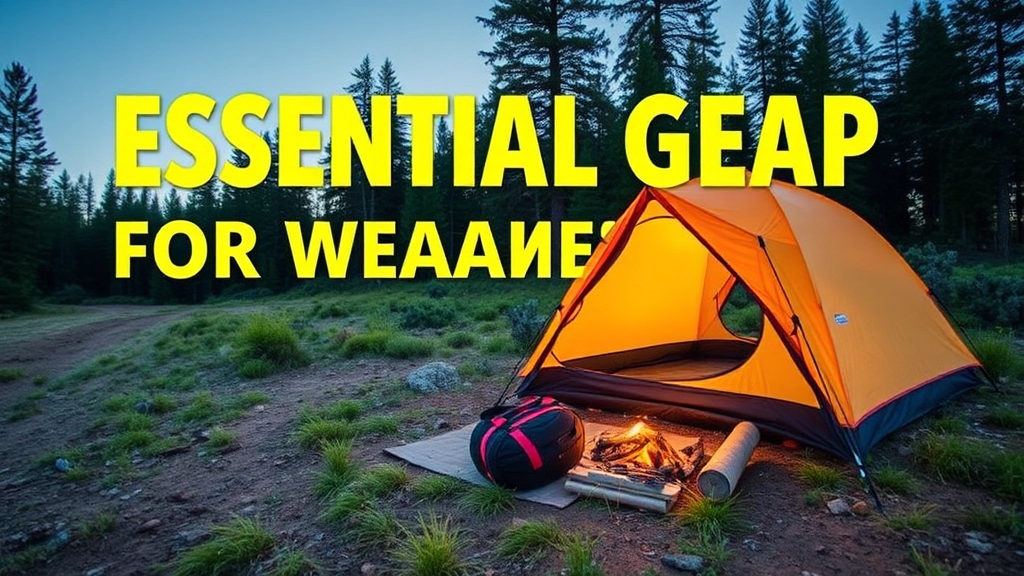
Alright, let’s talk about essential gear for hot weather camping.
Ever been out in the blazing sun, sweating buckets, and thought, “Man, I wish I had the right gear for this”?
Yeah, me too.
Here’s the lowdown on what you need to stay cool and comfortable.
Lightweight Tent
First up, a lightweight tent.
You don’t want to be dragging a heavy, suffocating tent around.
Look for something with good ventilation and a reflective flysheet to keep the heat out.
Sleeping Gear
Next, sleeping gear.
Forget the heavy sleeping bags.
Go for a light sleeping bag or a breathable sleeping pad.
If you’re feeling fancy, a camping hammock could be a game-changer.
Cooling Gear
Cooling gear is a must.
Portable fans, cooling towels, and even a small battery-operated misting fan can make a world of difference.
Trust me, you’ll thank yourself later.
Hydration Packs
Staying hydrated is crucial.
A hydration pack is a lifesaver.
It’s easier than carrying bottles and keeps your water cool.
Sun Protection
Don’t skimp on sun protection.
A wide-brimmed hat, UV-blocking sunglasses, and a high SPF sunscreen are non-negotiable.
Cooking Gear
When it comes to food, cooking gear matters.
A portable stove that doesn’t heat up your entire campsite is ideal.
And don’t forget a cooler to keep your drinks and perishables cold.
Clothing
We’ll dive deeper into clothing later, but for now, think light, moisture-wicking fabrics.
Breathable, quick-dry clothes are your best friends.
Quick Tips
- Ventilation: Make sure your tent has plenty of mesh windows.
- Insulation: Reflective blankets can help keep the sun off your tent.
- Portable Shade: A pop-up canopy or tarp can provide much-needed shade.
- Footwear: Lightweight, breathable shoes or sandals are key.
Real Talk
I remember my first summer camping trip.
I was sweating like a turkey at Christmas.
Had a heavy tent, no fan, and forgot my hat.
Learn from my mistakes.
Get the right gear, and your summer camping trip will be a breeze.
When summer camping, one of the biggest challenges is keeping your tent cool during the day. The last thing you want is to return from a hike to find your tent transformed into a sauna. So, how can you ensure a comfortable, cool environment in your tent when the sun is blazing? Let’s dive into some practical strategies.
Before we jump into solutions, let’s address the common worry: why does your tent get so hot in the first place? The answer is simpleâdirect sunlight and poor ventilation. Tents can trap heat like a greenhouse, making the interior unbearably warm.
Choosing the right spot to pitch your tent is crucial. Here’s what to keep in mind:
– **Look for Shade:** Set up your tent under trees or in areas that offer natural shade. This can significantly reduce the amount of direct sunlight hitting your tent.
– **Consider the Wind:** Position your tent to take advantage of any natural breezes. This will help with ventilation and cooling.
Reflective tarps and flysheets can make a world of difference:
– **Reflective Tarps:** Place a reflective tarp over your tent. This will bounce the sun’s rays away, keeping the interior cooler.
– **Flysheet:** Ensure your tent’s flysheet is properly set up. It acts as a barrier against direct sunlight while allowing air to circulate.
Good ventilation can prevent your tent from turning into an oven. Here are some tips:
– **Open All Vents and Windows:** Keep all vents and windows open during the day to allow for maximum airflow.
– **Mesh Panels:** Tents with mesh panels can offer excellent ventilation while keeping bugs out.
A ground cover can also help in keeping your tent cool:
– **Reflective Ground Cover:** Lay a reflective ground cover under your tent. This can prevent heat from the ground from seeping into your tent.
Sometimes, natural methods aren’t enough, and you need a bit of technology:
– **Battery-Operated Fans:** Portable, battery-operated fans can circulate air inside your tent, making it feel cooler.
– **Cooling Pads:** Consider using cooling pads or gel packs. Place them inside your sleeping area to keep it cool.
Last summer, I went camping in the Lake District. The first day was scorching, and my tent felt like an oven. I remembered a tip about using a reflective tarp and set one up over my tent. I also opened all the vents and windows. The difference was night and dayâmy tent stayed cool, and I could relax comfortably. For more tips on a fun and comfortable camping experience, check out our [Ultimate Summer Camp Planning Template](https://summercamp.blog/ultimate-summer-camp-planning-template-for-a-funfilled-experience/) and make sure to pack everything you need with our [Comprehensive Summer Camp Supplies List](https://summercamp.blog/comprehensive-summer-camp-supplies-list-essential-packing-guide/).
Staying Hydrated: Water and Electrolytes
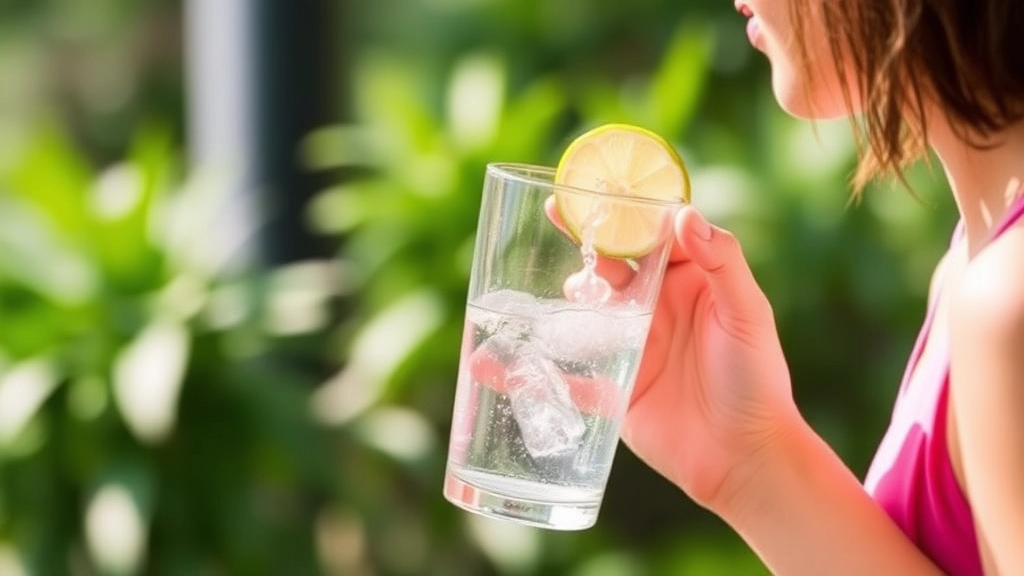
Ever found yourself parched and dizzy under the blazing sun while camping?
Yeah, me too.
Staying hydrated in the summer heat is no joke.
It’s the difference between having a blast and feeling like you’re melting into a puddle.
Let’s dive into how to keep your hydration game strong.
Why Hydration is Crucial
When you’re out there in the wild, your body sweats more to cool down.
That means you’re losing water and electrolytes faster than you think.
Not keeping up?
You risk dehydration, heat exhaustion, or worse.
Water: Your Best Mate
First things first, always have water on hand.
But how much?
- Rule of thumb: Drink at least 3-4 litres per day.
- Pro tip: If you’re active, bump it up even more.
Electrolytes: The Unsung Heroes
Water alone won’t cut it.
You need electrolytes to keep your body functioning smoothly.
Think sodium, potassium, magnesium.
- Electrolyte tablets: Easy to pack, just drop one in your water.
- Sports drinks: Handy but watch the sugar.
- Natural sources: Coconut water, bananas, and nuts.
Practical Tips for Staying Hydrated
- Hydration packs: These are lifesavers. Sip as you go.
- Set reminders: Use your phone to remind you to drink.
- Monitor your urine: Sounds gross, but if it’s dark, drink up.
Real Talk: My Own Experience
One summer, I thought I could get by with just a couple of water bottles.
Big mistake.
By midday, I was feeling lightheaded and had to cut my hike short.
Now, I never skimp on water or electrolytes.
Quick Recap
- Drink water: Aim for 3-4 litres daily.
- Include electrolytes: Tablets, sports drinks, or natural sources.
- Use hydration packs: Convenient and effective.
- Set reminders: Stay on top of your intake.
Staying hydrated with water and electrolytes isn’t just a tip; it’s a game-changer.
Cooling Strategies for Sleep: Fans, Hammocks, and Cold Showers
Ever found yourself tossing and turning in your tent, drenched in sweat, wondering how on earth you can get some decent sleep in this summer heat? You’re not alone. Keeping cool at night while camping is a common challenge, but with the right strategies, you can turn those sleepless nights into restful ones.
Fans: Your Portable Breeze
Let’s start with fans. They might seem like a no-brainer, but not everyone thinks to pack one. A portable fan can be a game-changer for your camping experience. Here’s why:
- Battery-Powered Fans: These are lightweight and can run for hours on a single set of batteries. They’re perfect for those off-grid locations where electricity isn’t an option.
- Solar-Powered Fans: Ideal for eco-conscious campers. Charge them during the day and enjoy a cool breeze all night.
- USB Fans: If you have a power bank, a USB fan can be a compact and efficient solution.
Hammocks: Elevate Your Sleep
Next up, hammocks. If you’ve never slept in a hammock, you might be surprised at how much cooler it can be compared to a tent. The airflow is unbeatable, and it keeps you off the ground, away from the heat radiating from the earth. Here’s how you can make the most of a hammock:
- Choose a Shady Spot: Set up your hammock in a shaded area to avoid direct sunlight.
- Use a Bug Net: While it’s cooler, you’ll want to keep the bugs at bay.
- Consider a Lightweight Blanket: Even in summer, temperatures can drop at night. A light blanket can keep you comfortable without overheating.
Cold Showers: Refresh and Revitalise
Now, let’s talk about cold showers. They’re not just for the brave-hearted; they’re a practical way to cool down before bed. Here’s how you can incorporate them into your camping routine:
- Portable Shower Bags: Fill these with water and hang them in the sun during the day. By evening, the water will be warm enough for a comfortable shower, but not too hot.
- Stream or Lake Dips: If you’re camping near a water source, a quick dip can lower your body temperature effectively.
- Wet Cloth Wipe-Down: If a shower isn’t feasible, a wet cloth wipe-down can do wonders. Focus on pulse points like wrists, neck, and ankles to cool down quickly.
Real-Life Example
Last summer, I camped in the Lake District, and the heat was relentless. I packed a small, battery-powered fan, set up my hammock between two sturdy trees, and took a quick dip in the lake before bed. The combination of these strategies made a world of difference. I slept like a baby, despite the high temperatures.
Quick Tips Recap
- Portable Fans: Battery, solar, or USB-powered options.
- Hammocks: Elevate your sleep for better airflow.
- Cold Showers: Use portable shower bags or natural water sources.
For more tips on making your summer camp experience enjoyable, check out our guide on 1-week summer camp packing list essentials and explore some summer camp craft ideas for kids to keep everyone entertained.
Clothing Tips: What to Wear for Summer Camping
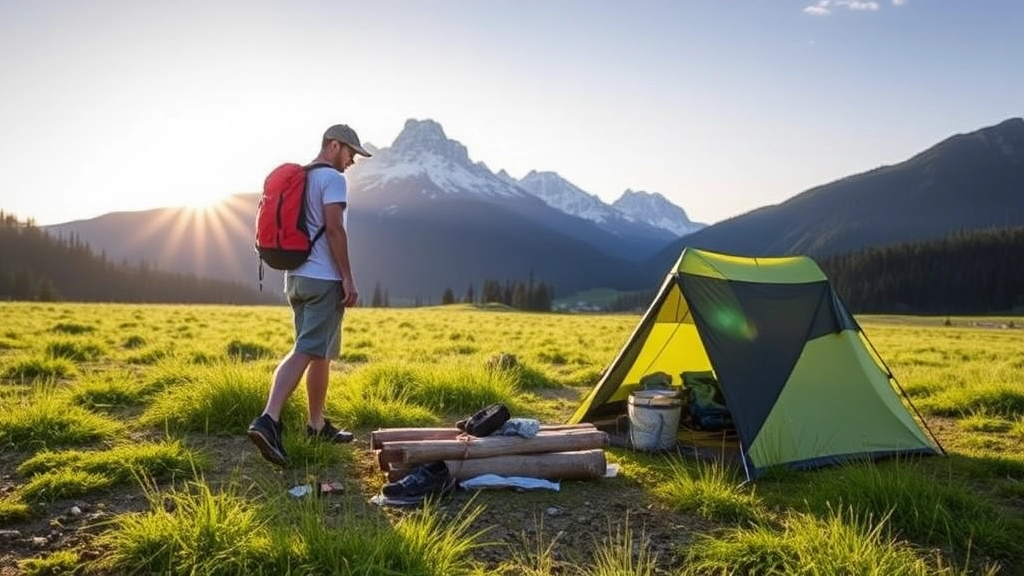
Ever wondered what to wear for summer camping?
I get it.
It’s hot, you’re sweating, and you want to be comfortable without looking like a mess.
Here’s the lowdown.
Stay Cool, Stay Comfortable
First things first, you need breathable fabrics.
- Cotton is a no-go. It traps moisture and makes you feel sticky.
- Opt for lightweight, moisture-wicking materials like polyester or nylon.
- Merino wool is also a great option. It’s breathable and doesn’t stink after a day of sweating.
Layer Up Smartly
Yes, even in summer, layers matter.
- Base Layer: A light, moisture-wicking shirt.
- Mid Layer: A breathable fleece or lightweight jacket for cooler evenings.
- Outer Layer: A windbreaker or rain jacket because weather can be unpredictable.
Footwear Matters
Your feet are your best friends out there.
- Go for lightweight hiking boots or trail shoes.
- Breathable socks are a must. Merino wool or synthetic blends work wonders.
Headgear
Don’t forget your head.
- A wide-brimmed hat or a cap to protect you from the sun.
- Sunglasses with UV protection to keep your eyes safe.
Accessories
Small things can make a big difference.
- Bandanas or neck gaiters for added sun protection.
- Lightweight gloves if you’re handling rough terrain or gear.
Real Talk
Once, I went camping in the Peak District and thought a simple t-shirt and shorts would do the trick.
Big mistake.
By midday, I was drenched in sweat and by evening, I was shivering.
Lesson learned.
Final Thoughts
Choosing the right clothing can make or break your summer camping experience.
Keep it light, breathable, and layered.
Trust me, you’ll thank yourself later.
Now, what are you waiting for?
Gear up and enjoy your summer adventure!
Managing Outdoor Activities in the Heat
When it comes to summer camping, managing outdoor activities in the heat can be a real concern. How do you stay active without overheating? How can you enjoy your favourite outdoor pursuits without risking heat exhaustion? Let’s break it down.
Start Early or Go Late
One of the best ways to manage outdoor activities in the heat is to avoid the peak sun hours. Early mornings and late afternoons are your best friends. The temperature is cooler, and the sun isn’t as intense.
- Morning Activities: Hikes, fishing, and bird-watching are great to do in the early morning when the air is fresh and the sun is just rising.
- Evening Activities: Opt for evening walks, stargazing, or setting up a campfire. The cooler temperatures make these activities more enjoyable.
Find Shade
Always look for shaded areas to set up your base. Whether it’s a picnic spot or a place to rest during a hike, shade is crucial.
- Natural Shade: Trees and large rocks can provide natural shelter from the sun.
- Portable Shade: Bring along a portable canopy or an umbrella. These can be lifesavers during midday activities.
Hydration Stations
Staying hydrated is non-negotiable. Water and electrolytes are your best allies here.
- Water Bottles: Always carry a reusable water bottle. Refill it whenever you get the chance.
- Electrolyte Drinks: Keep some electrolyte packets or drinks handy. They help replenish the salts you lose through sweat.
Wear the Right Gear
What you wear can significantly impact how you manage outdoor activities in the heat.
- Light-Coloured Clothing: Light colours reflect sunlight, keeping you cooler.
- Breathable Fabrics: Opt for materials like cotton or moisture-wicking fabrics. These help your body breathe better.
- Hats and Sunglasses: Protect your face and eyes from the sun’s harsh rays. Consider checking out some top summer camp hats for stylish and sun-protective options.
Take Breaks
Don’t push yourself too hard. Regular breaks are essential to avoid overheating.
- Scheduled Breaks: Plan your activities with breaks in between. Use this time to hydrate and cool down.
- Cool Down Spots: Find a cool spot to rest, whether it’s under a tree or near a water body.
Cooling Techniques
Sometimes, you need a little extra help to stay cool.
- Wet Cloths: Carry a damp cloth or bandana. Placing it on your neck can provide immediate relief.
- Portable Fans: Battery-operated fans can be very effective. They’re small, lightweight, and can make a big difference.
Real-Life Example
Last summer, my mates and I went camping in the Peak District. We planned a long hike, but the midday sun was brutal. We started early, around 6 AM, and managed to cover most of the trail by 11 AM. We found a shaded spot near a stream, set up our portable canopy, and took a long break. We used wet cloths to cool down and stayed hydrated with electrolyte drinks. By late afternoon, we were ready to tackle the rest of the hike. It was a memorable experience, and we managed to enjoy the day without any heat-related issues.
Managing outdoor activities in the heat doesn’t have to be daunting. With a bit of planning and the right strategies, you can make the most of your summer camping adventures. For more tips on how to prepare, check out this ultimate guide on things to pack for summer camp.
Safety Measures for Sun and Heat Protection
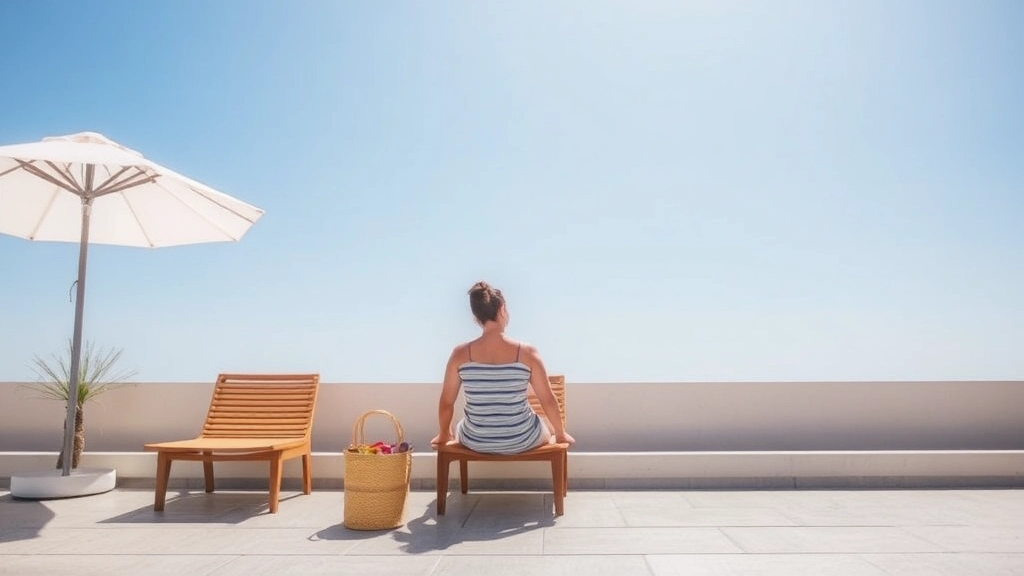
Ever been roasted under the summer sun while camping?
Yeah, me too.
Let’s dive into some practical tips to keep you safe and cool.
Why Sun and Heat Protection Matters
You don’t want to end up with heatstroke or a nasty sunburn, right?
Let’s avoid that.
Basic Gear to Shield Yourself
Here’s what you need:
- Sunscreen: SPF 30 or higher. Reapply every two hours.
- Wide-brimmed hat: Keeps the sun off your face and neck.
- Sunglasses: Protect your eyes from UV rays.
- Lightweight, long-sleeve clothing: Keeps you cool and shields your skin.
Timing Your Activities
Avoid the sun’s peak hours.
From 10 AM to 4 PM, the sun’s UV rays are the strongest.
Plan your hikes and outdoor fun for early morning or late afternoon.
Finding Shade
Always set up camp in a shaded area if possible.
Use tarps or portable canopies to create your own shade.
Hydration is Key
Drink water. Lots of it.
But don’t just chug plain water.
Add electrolytes to keep your body balanced.
Cooling Down
Got a stream or lake nearby?
Perfect.
Take a dip to cool off.
No water around?
Wet a bandana and place it on your neck or forehead.
Recognising Heat-Related Illness
Know the signs:
- Heat exhaustion: Heavy sweating, weakness, cold, pale, and clammy skin.
- Heatstroke: High body temp, hot and dry skin, rapid pulse, possible unconsciousness.
If you or your mates show these symptoms, act fast.
Cool down and seek medical help if needed.
Personal Story
Last summer, I ignored these tips.
Ended up with a sunburn that felt like I’d hugged a cactus.
Trust me, you don’t want that.
Food and Drink Ideas to Stay Refreshed While Camping
Ever found yourself sweating buckets and craving something cool and refreshing while camping?
Yeah, me too.
Summer camping can be a blast, but staying cool and hydrated is key.
So, let’s dive into some food and drink ideas that’ll keep you refreshed and ready to tackle the great outdoors.
Quick and Easy Snacks
You don’t want to spend hours cooking in the heat, right?
Here are some quick and easy snacks to keep you going:
- Fresh Fruit: Watermelon, grapes, and berries are hydrating and easy to pack.
- Veggie Sticks: Carrot and cucumber sticks with a bit of hummus.
- Yoghurt: A small tub of yoghurt can be a great cool-down snack.
- Nuts and Seeds: High in energy, easy to carry, and they don’t spoil.
Hydrating Drinks
Staying hydrated is a no-brainer.
But plain water can get boring.
Here are some tasty alternatives:
- Infused Water: Add slices of lemon, cucumber, or mint to your water.
- Electrolyte Drinks: Sports drinks or coconut water can help replenish electrolytes.
- Iced Tea: Brew some tea, let it cool, and add ice. Refreshing and easy.
- Smoothies: Blend up some fruit and yoghurt for a cool, nutritious drink.
Simple Meals
You don’t need a gourmet kitchen to whip up a good meal.
Here are some simple ideas:
- Cold Pasta Salad: Cook the pasta at home, then mix with veggies and a light dressing.
- Wraps: Fill a tortilla with veggies, hummus, and some protein.
- Salads: Keep it simple with greens, tomatoes, cucumbers, and a bit of cheese.
- BBQ Skewers: Pre-make them at home with veggies and meat. Quick to cook, easy to eat.
Pro Tips for Staying Cool
- Frozen Bottles: Freeze water bottles and use them as ice packs. Drink them as they melt.
- Cooler Management: Keep your cooler in the shade and open it as little as possible.
- Pre-Chill Everything: Freeze or chill your food and drinks before packing them.
Real-Life Example
Last summer, I went camping with some mates.
We had a mix of fresh fruit, cold pasta salads, and iced teas.
One of us brought a portable blender for smoothies.
It was a game-changer.
We stayed cool and hydrated, and honestly, it made the trip so much better.
For more tips on making your summer camp experience unforgettable, check out our guide on creative ideas for an engaging summer camp experience. And if you’re still planning your trip, don’t miss our essential packing list for summer camp success.
FAQs on Camping In The Summer
What are the essential gear items for hot weather camping?
For hot weather camping, you need a lightweight tent with good ventilation, light sleeping gear like a breathable sleeping pad or hammock, cooling gear such as portable fans or cooling towels, a hydration pack, sun protection (wide-brimmed hat, UV-blocking sunglasses, high SPF sunscreen), a portable stove, and light, moisture-wicking clothing.
Why is hydration so crucial during summer camping?
Hydration is vital because your body sweats more to cool down, leading to faster loss of water and electrolytes. Not staying hydrated can result in dehydration, heat exhaustion, or even heatstroke. Aim to drink at least 3-4 liters of water daily and include electrolytes in your intake.
What type of clothing should I wear for summer camping?
Opt for lightweight, moisture-wicking fabrics like polyester or nylon. Avoid cotton as it traps moisture. Wear a light, moisture-wicking base layer, a breathable mid-layer for cooler evenings, and an outer layer like a windbreaker. Don’t forget lightweight hiking boots or trail shoes and breathable socks.
How can I protect myself from the sun and heat while camping?
Use SPF 30 or higher sunscreen, a wide-brimmed hat, UV-protective sunglasses, and lightweight, long-sleeve clothing. Plan activities outside peak sun hours (10 AM to 4 PM), set up camp in shaded areas, and stay hydrated. Cooling down in a stream or using a wet bandana can help manage heat.
What are some practical tips for staying hydrated?
Use hydration packs for convenient sipping, set reminders to drink water, and monitor your urine color (if it’s dark, drink more). Include electrolytes through tablets, sports drinks, or natural sources like coconut water and bananas.
What should I do if I experience heat-related illness symptoms?
Recognize the signs of heat exhaustion (heavy sweating, weakness, cold, pale skin) and heatstroke (high body temperature, hot and dry skin, rapid pulse). If symptoms appear, cool down immediately and seek medical help if necessary.
Why is it important to have proper sun and heat protection gear?
Proper sun and heat protection gear helps prevent sunburn, heat exhaustion, and heatstroke. This includes wearing sunscreen, protective clothing, and staying hydrated. It ensures a safer and more comfortable camping experience.
Can you share a personal experience related to summer camping?
Once, I went camping in the Peak District with just a t-shirt and shorts, thinking it would be enough. By midday, I was drenched in sweat, and by evening, I was shivering. Now, I always wear layered, moisture-wicking clothing and carry the right gear to stay comfortable.
What are some quick tips for setting up a cool and comfortable campsite?
Ensure your tent has plenty of mesh windows for ventilation, use reflective blankets to keep the sun off your tent, and set up a pop-up canopy or tarp for additional shade. Lightweight, breathable footwear is also essential.
How much water should I drink while camping in hot weather?
You should aim to drink at least 3-4 liters of water per day. If you’re very active, you may need even more. Including electrolytes in your water can help maintain your body’s balance.
References
-
Hot Weather Camping Tips from REI
-
Survival Tips for Hot Weather Camping from Outdoor Life
-
How to Stay Cool While Camping in Hot Weather from Backpacker

